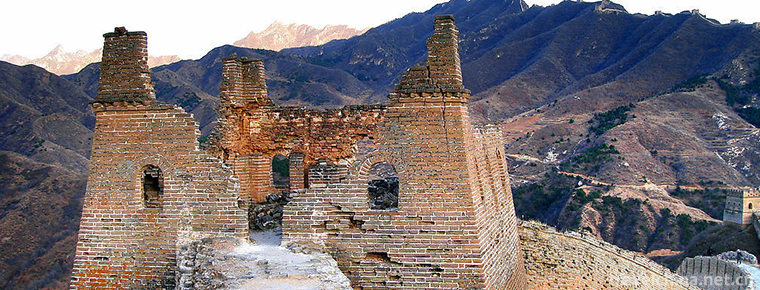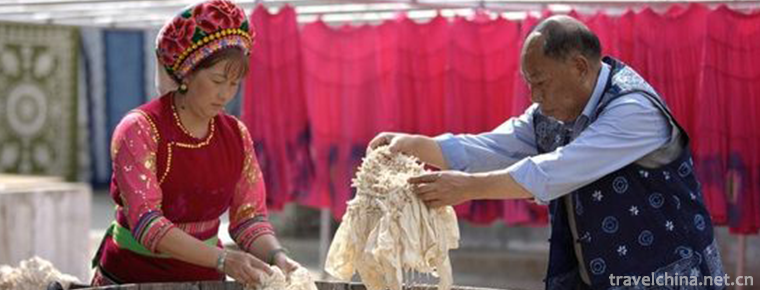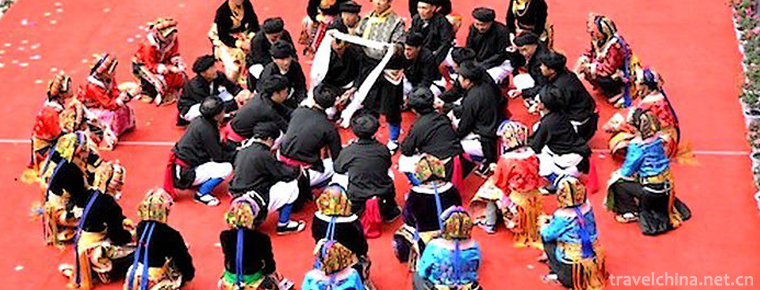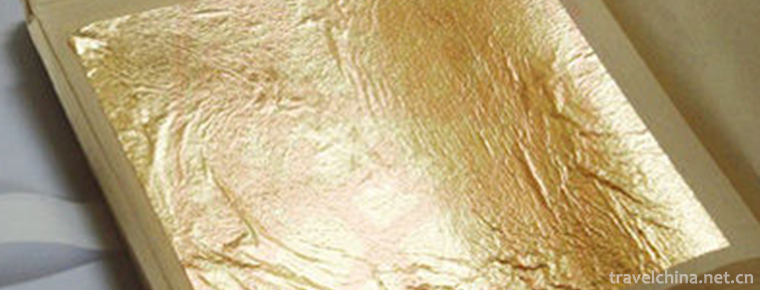Cuiyun Lang Scenic Area
Cuiyun Lang Scenic Area
Cuiyun Corridor, also known as "Huangbai Avenue", is a green corridor composed of nearly 10,000 green roads and ancient cypresses. It is the oldest and most well-preserved ancient road traffic system so far. It is known as "the first ancient road in the world", "the living fossil of land traffic". It is comparable to "the ancient road in Rome".
geographical environment
The Cuiyun Corridor, centered on the ancient city of Jiange, arrives at Zitong in the west, Zhaohua in the north, and Langzhong in the south. It is known as "300,000 long trees". Among them, the ancient cypress road, covering the sky and shading the sun, is just like a corridor. From the Qin and Han Dynasties to the Ming and Qing Dynasties, the ancient cypress in Langzhong has undergone six large-scale plantations. There are more than 8,000 existing ancient cypress trees, most of which are over 1700 years old. Ancient cypress has its own historical legends.
Three hundred miles of Cuiyun Corridor, the essence of which is 7 kilometers north of Jianmengguan, Jiange County, Sichuan Province, in Dabaishu Bay. The narrow sense of Cuiyun Corridor refers to the Cuiyun Corridor scenic spot here. Cuiyun Lang Scenic Spot is one of the first batch of key scenic spots and the core scenic spots of Jianmen Shudao, one of the national key cultural relics protection units. It is also a national forest park, a national 4A-level tourist attraction, where the largest and most famous trees of Cuiyun Lang are located.
Tourist attractions
The magnificent momentum and green posture of the Cuiyun Corridor are eulogized by literati and ink-writers of all dynasties, which makes visitors from ancient times to present fascinated. Cuiyun Lang Scenic Spot through the creation of national AAAA-level tourist attractions activities, the supporting facilities of the scenic area are more complete, the tourist environment is more beautiful, the tourism projects are more abundant, and the service functions are more perfect. In the next step, we will according to scientific planning, in accordance with national standards, increase investment in the scenic area, and build Cuiyun Lang into a combination of natural ecology, history, culture and folk customs. Sports world-class tourism products.
Enter the scenic spot, by 108 National Highway, dense ancient cypress forms, different styles, green and even clouds. According to their growth, appearance and historical legends, people have taken many beautiful names. Such as the "mandarin duck tree", "sister tree", "Luohan tree", "Guanyin tree", "Baixiang swallowing stone" named after the growth trend; the "top-ranking cypress", "handsome cypress", "Shouxing tree" named after the robust; the "Adou cypress", "Wangxiang cypress", "Shiniushu" and "Fairy tree" named after the historical classics, are really "different and shameful".
Main attractions
Zhang Fei Jing
In the cypress forest, there is a well called Zhang Feijing. According to legend, General Zhang Fei of Shuhan was ordered to expedite the Northern Expedition. In the hot sun, the soldiers were hungry and thirsty. The horses were foaming at their mouths. Zhang Fei ordered the soldiers to look for water everywhere. There was no water source. He was upset. He raised his fist and shouted, "I'm thirsty too!" Fists hit the ground, only to see a clear spring from the stamp, alleviating hunger and thirst. Zhang Fei ordered the soldiers to dig a deep well from the round pit they had smashed into for the local villagers to drink. In order to thank Zhang Fei, the people called this well Zhang Fei Jing.
Cuiyun Lang Stone Stele
At the south entrance of Cuiyun Corridor, two stone tablets were erected, namely, the Cuiyun Corridor inscribed by General Zhang Aiping, former Minister of National Defense, in 1983 and the Cuiyun Corridor inscribed by Mr. Sha Menghai, a famous Chinese calligrapher in 1984.
Zhang Fei statue
Along the path to the beams, the first thing I saw was a stone statue with a stele inscribed next to it. It was recorded as Zhang Fei's second son, Zhang Shao. His official book, Shangshu, was inscribed in memory of later generations because of his achievements in tree planting and road protection.
Others say that this statue is Zhang Fei. In the Shuhan Dynasty, Zhang Fei served as Brazilian (Langzhong) Taishou, military affairs and government affairs. Yushu appeared frequently in Sichuan, often delayed by the steep situation of Jianmen Mountain and ignorance of the path. Zhang Fei ordered soldiers to dig rocks from Langzhong to Zhaohua to open mountains, expand the sheep's intestine path into a stone road more than a foot wide, plant cypress trees on both sides, and strictly protect them. Baidao is not only conducive to marching, but also convenient for merchants and local people to walk. Later, the people thanked him for planting cypress and protecting cypress, and in this statue of stone to commemorate.
Li Bi Temple
On the hill ridge of Cuiyun Lang, there is Li Bi Temple, an ancestral hall of Ming Dynasty officials and scholars. There are statues of Li Bi in the ancestral hall. Li Bi? To 1525), the word Baifu, number Zhuzhai. Wuyuan (now Wuming County, Guangxi Zhuang Autonomous Region) is a member of the Zhuang nationality. He Hongzhi eight years (1495) in Zhongju, Lanxi County, Zhejiang Province, Ren
Hexian Educational Instructions also gave lectures in Nanjing in the following chapters. Zhengde 10 years (1515), he served as the governor of Jianzhou (today's Jianke Pavilion) in Sichuan Province, building Jianke Pavilion Road, advocating school academies, and adding trade markets. In the 16th year of Zhengde (1521), he was promoted to Linan Prefecture in Yunnan Province. In the fourth year of Jiajing (1525), he was transferred to the residence Department of Nanjing as a foreign Lang. He died of illness on his way to work. His works include New Records of Jianmen, Records of Famous Confucians, Huangming Music Score and Jiange Collection.
When Li Bi took office in Zhizhou of Jianzhou, the war was just peaceful, the city walls of Jianzhou were ruined, the people's livelihood was charred, and all jobs were waiting for prosperity. He has done a lot of practical things for the people, especially advocating the renovation of the 300-mile official road from the sword to the Baoning Palace (Langzhong), organizing migrant workers to plant cypress trees on both sides of the road, and promulgating a ban on cutting between officials and people. In the forty-sixth year (1618) of Wanli in Ming Dynasty, Zhu Cai, a statesman, wrote the Record of Restoring the Confucian Temple, which recorded that "Kendo planted cypress, Gai Wuyuan Li Gong Yin." Qing Yongzheng's "Jianzhou Zhi" contains Qiao Bo's "Cuiyun Corridor" poem: "Who planted two lines of ancient cypress?... It is said that Li Baifu lived in the past. Tongzhi Jianzhou Zhi contains: "Ten thousand ancient cypress trees are planted by Bi." The actions of Li Bizhibe, Bubai and Hubai played an extremely important role in the formation of Cuiyun Corridor. In order to remember Li Bi and Yang Ruzhen, two outstanding parents in Zhizhou, the people of Jianzhou built the Erxian Temple in Pu'an (Pu'an Town, Jiange County) in the eighth year of Wanli Ming Dynasty (1580), and cast two bronze statues for worship. The ancestral temple was destroyed by fire. In the eleventh year of Qing Guangxu (1883), it was rebuilt in Xiaolinglong (Xiaolinglong Community of Pu'an Town). Later, the local government built a new temple here, dedicated to Li Bi, to praise his achievements in planting and protecting cypress.
Cui Yun Lou
There are also Cuiyun Tower on the top of the mountain. Cuiyun Tower is a pavilion with folk characteristics built on the site of ancient beacon tower. During the Qin and Han Dynasties, the Three Kingdoms played an important role in military affairs. In 1992, Jianmenguan National Forest Park built this building to protect the site of the beacon fire station for visitors to climb. It is also a fire observation platform for Jianmeng Forest Farm.
Climbing the Cuiyun Tower, you can see the magnificent scenery of the 72 peaks of Jianmen and the Cuiyun Corridor. Looking ahead, the ancient Berlin is full of lush branches and leaves, magnificent momentum, lush and lush, like a green ribbon, winding the mountains; and like a mangyang dragon, and Jianmen peaks cross each other, showing the simple and magnificent scenery of Shudao.
Highlights of scenic spots
Cuiyun Corridor is a green corridor composed of nearly 10,000 ancient cypress trees. It was built in Qin and Han Dynasties, and was completed in Ming Dynasty. It is rare in the world and is praised as "the soul of Shu Dao" and "the treasure of the country" after thousands of years of vicissitudes.
Tourism information
Charging standard
Ticket prices of Dagu Glacier Scenic Spot: 200 yuan in peak season and 80 yuan in off season;
Tourist ticket price: 88 yuan per ticket;
Travel ropeway fare: 220 yuan per ticket.
It's about 290 kilometers from Chengdu to here.
Chengdu-55km-Dujiangyan-80km-Wenchuan-44km-Maoxian-100km-Heishui-9km-Dagu Glacier Scenic Area.
Traffic survey
Traffic in the city: You can get off at the gate of the scenic spot by long-distance bus from Guangyuan to Jiange and Duyang.
Matters needing attention
The parking lot is located at the entrance of Cuiyun Corridor, and the parking fee is 10 yuan per vehicle per time.
The road in the scenic area is dangerous. Please pay attention to personal safety.
It is forbidden to bring fire into the scenic area and smoke in the scenic area.
All information is for reference only. If there is any change, the actual scenic spot will be the main one. The temperature in the scenic area is suitable, but if you go to the glacier, you need to wear a sweater and a coat. We should respect local folk culture and religious beliefs so as not to cause unnecessary trouble.
The whole journey from Chengdu to Dujiangyan is a highway, from Dujiangyan to Wenchuan (National Highway 213) is a highway, and from Wenchuan to Maoxian (National Highway 213) is a asphalt pavement. Because of the many curved roads, attention should be paid to driving. The whole journey from Maoxian to Heishui (Provincial Highway 302) is a new asphalt pavement with good road condition.
Best travel time
Guangyuan City belongs to the subtropical humid monsoon climate. It has the characteristics of humid climate in the South and high clouds and bright sunshine in the north. The annual average temperature is about 17 C, and it can travel in all seasons. Best travel time: April-October.





-
the Gubeikou Great Wall
The ancient Beikou Great Wall is the most complete Great Wall system in the history of China's Great Wall. It consists of the Great Wall of the Northern Qi Dynasty and the Great Wall of the Ming Dynas.
Views: 106 Time 2019-01-12 -
Bai nationality tiedyeing skills
Bai tie-dyeing technology, the local traditional textile dyeing technology in Dali City, Yunnan Province, is one of the national intangible cultural heritage..
Views: 210 Time 2019-04-03 -
Bo Ba Shen en
Bobassengen is a unique folk large-scale narrative mass pot village dance created by Ganbao Tibetan Village in Jiarong Tibetan area, Lixian County, Sichuan Province. "Boba" .
Views: 389 Time 2019-04-04 -
Forging Technology of Nanjing Gold Foil
Nanjing gold foil forging technology, local traditional handicraft in Nanjing, Jiangsu Province, is one of the national intangible cultural heritage..
Views: 111 Time 2019-06-07 -
Firing Techniques of Zibo Ceramics
During the Wei, Jin, Southern and Northern Dynasties, Zibo began to produce porcelain. During the Tang and Song Dynasties, the technology of making porcelain was constantly improving. During the Ming .
Views: 196 Time 2019-08-16 -
Sichuan Normal University
Sichuan Normal University is one of the key universities in Sichuan Province and the first national universities to implement the "Basic Capacity Building Project of Colleges and Universities in .
Views: 138 Time 2019-08-31 -
Peking Union Medical College
The Chinese Academy of Medical Sciences was established in 1956. Peking Union Medical College was founded in 1917. Since 1957, the Chinese Academy of Medical Sciences and Peking Union Medical College .
Views: 231 Time 2019-09-06 -
Scientific research on Chengdu Giant Panda Base
As of 2016, it has undertaken one national major basic research project (former "973" project), one national "Tenth Five Year Plan" high technology research (863 plan), several provincial, ministerial and municipal scientific research projects and Chengdu Giant Panda Breeding .
Views: 104 Time 2020-12-13 -
Guangyuan history and culture
"Guangyuan daughter's day, women swim in the river bay", this is a kind of folk cultural activities, this is the chapter described by Guangyuan daughter's day. On the first daughter's day in 1988, the water area of Jialing River in front of huangze temple was.
Views: 137 Time 2020-12-15 -
Neijiang cultural undertakings
By the end of 2019, there are 121 performing arts venues in Neijiang City, including 6 cultural venues. There are 5 museums, 5 cultural relics protection and management institutions, 7 national key cultural relics protection units, 42 provincial cultural relics.
Views: 281 Time 2020-12-16 -
Neijiang social security
In 2019, there were 109600 people participating in the endowment insurance (including retirees) of government institutions, 842500 people of enterprise employees (including retirees), and 1501700 people of urban and rural residents. 52100 new urban jobs.
Views: 353 Time 2020-12-16 -
Leshan population
By the end of 2018, the total number of household registration in Leshan was 1 million 269 thousand and 500, and the household registration population was 3 million 506 thousand and 800. Among them, 1 million 290 thousand and 600 were urban household registration.
Views: 381 Time 2020-12-17







